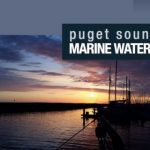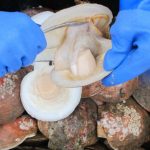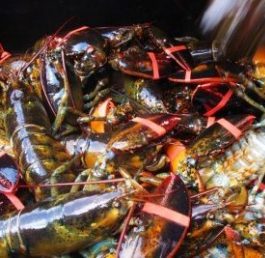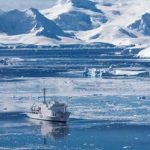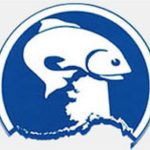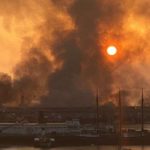Tag Archives: State of Alaska
Canada, Alaska suspend fishing of Yukon River chinook salmon for 7 years
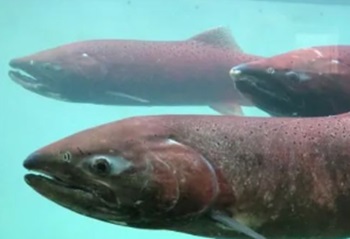 In a bid to help the recovery of the Yukon River chinook salmon run, the federal government and the State of Alaska have agreed to implement a seven-year moratorium on fishing the species. The suspension, in effect for one full life cycle of a salmon, includes commercial fishing and recreational angling in the Yukon River mainstem and its Canadian tributaries. Representatives from Fisheries and Oceans Canada and the Alaska Department of Fish and Game signed the agreement on Monday. The number of chinook salmon crossing the international border into Canadian waters has for years plummeted, with the last two years yielding some of the worst tallies recorded on the Yukon River. more, >>click to read<< 09:06
In a bid to help the recovery of the Yukon River chinook salmon run, the federal government and the State of Alaska have agreed to implement a seven-year moratorium on fishing the species. The suspension, in effect for one full life cycle of a salmon, includes commercial fishing and recreational angling in the Yukon River mainstem and its Canadian tributaries. Representatives from Fisheries and Oceans Canada and the Alaska Department of Fish and Game signed the agreement on Monday. The number of chinook salmon crossing the international border into Canadian waters has for years plummeted, with the last two years yielding some of the worst tallies recorded on the Yukon River. more, >>click to read<< 09:06
State lawsuit claims federal government owes Alaska $700 billion for quashing Pebble mine
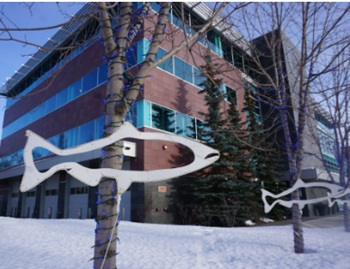 The federal government owes Alaska more than $700 billion in compensation for the 2023 Environmental Protection Agency action that blocked development of the massive and controversial Pebble Mine in Southwest Alaska, Gov. Mike Dunleavy’s administration claims in a lawsuit filed in a federal court. The lawsuit, filed Thursday in the U.S. Court of Federal Claims in the District of Columbia, is part of a flurry of legal actions by the state and the mine’s would-be developer that seek to revive the massive copper and gold project. In its complaint filed Thursday with the U.S. Court of Federal Claims, the state cited an estimate for 100 years of production to support the $700 billion figure. And it said Alaska had been depending on Pebble development for its economic future. more, >>click to read<< 09:26
The federal government owes Alaska more than $700 billion in compensation for the 2023 Environmental Protection Agency action that blocked development of the massive and controversial Pebble Mine in Southwest Alaska, Gov. Mike Dunleavy’s administration claims in a lawsuit filed in a federal court. The lawsuit, filed Thursday in the U.S. Court of Federal Claims in the District of Columbia, is part of a flurry of legal actions by the state and the mine’s would-be developer that seek to revive the massive copper and gold project. In its complaint filed Thursday with the U.S. Court of Federal Claims, the state cited an estimate for 100 years of production to support the $700 billion figure. And it said Alaska had been depending on Pebble development for its economic future. more, >>click to read<< 09:26
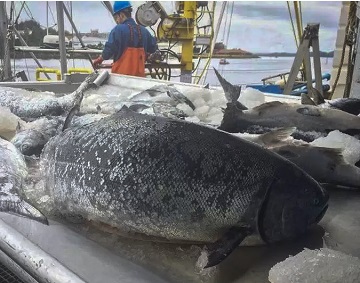
DOJ will appeal court order forcing Southeast Alaska king salmon troll fishery closure
The United States Department of Justice will appeal a federal court order forcing the closure of the commercial king salmon troll fishery in Southeast Alaska. In early May, Washington U.S. District Court Judge Richard Jones upheld an earlier recommendation that the Southeast summer and winter king fisheries were catching too much of the food source of a dwindling population of Puget Sound’s Southern Resident killer whales, in violation of the Endangered Species Act. The defendant intervenors in the case, the Alaska Trollers Association and the State of Alaska, filed motions earlier this month calling for a “partial stay” of the order, pending an appeal to allow the fisheries to proceed. >click to read< 15:58
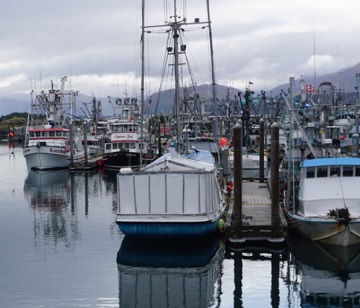
These are Alaska’s priorities for fishery management council
Based on discussions with a diverse range of user groups, delegations from our coastal communities, fishermen, processor representatives and other Alaskans, it is clear our fisheries are facing a number of challenges. These challenges include unprecedented declines in Bering Sea crab stocks and ongoing low harvestable levels of Pacific cod and other economically valuable stocks that are causing economic hardship for fishery participants and affected communities. We also heard ongoing concerns about the impacts of federal fisheries on key species like halibut, salmon, and crab. This input was valuable to better understand the issues and to identify priorities and potential solutions. >click to read< 16:01

Big changes are coming to Cordova’s south harbor
Long overdue renovation of Cordova’s south harbor begins this fall, with a schedule that sets completion of the $40 million project in the spring of 2024. The project is under contract with Turnagain Marine Construction, an Anchorage firm that specializes in heavy civil marine construction, said Tony Schinella, who has served as harbormaster at Cordova for about a decade. “We are definitely excited,” said Schinella. “We’re well overdue for a facelift. The existing docks have been there about 40 years.” The revamp, initially expected to cost about $30 million,,, >click to read< 16:50
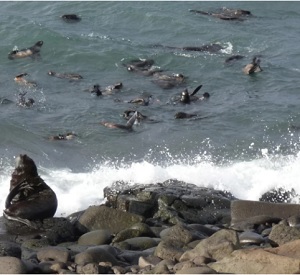
Proposed Bering Sea marine sanctuary draws pushback from fishing industry
The Aleut Community of St. Paul, the tribal government for the Pribilof Island community of around 500 people, says the sanctuary designation would give it greater authority to protect the region’s vast ecosystems and resources, including rich fishing grounds and habitat for the federally protected northern fur seal. NOAA accepted the tribe’s nomination last year, which set off panic bells in the commercial fishing industry. Many in the industry have voiced concerns that bringing in another co-manager could threaten the industry, even though NOAA and the tribe say the change would not affect fishing regulations. Commercial fishing representatives railed against the proposed sanctuary during an April 6 meeting in Anchorage, which NOAA hosted to clear up confusion within the industry. >click to read< 12:06

State of Alaska Federal Fishery Disaster Request
October 21/2022 – The Honorable Gina Raimondo, Secretary, United States Department of Commerce 1401 Constitution Avenue, NW Washington, D.C. 20230 Re: State of Alaska Federal Fishery Disaster Request Dear Secretary Raimondo: In accordance with Section 312(a) of the Magnuson-Stevens Fishery Conservation and Management Act (MSA) and Section 308(b) of the Interjurisdictional Fisheries Act (IFA), I am writing to request you declare a fishery disaster determination for the 2022/23 Bristol Bay red king crab and Bering Sea snow crab fisheries. I also request that you expedite a disaster
determination for the 2021/22 Bristol Bay red king crab fishery. >click to read<, Sincerely, Mike Dunleavy, Governor 21:18
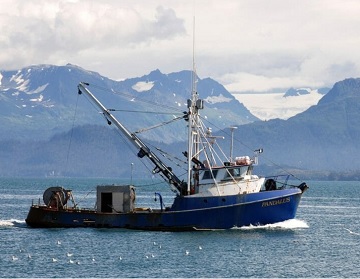
In victory for commercial fishermen, court orders Cook Inlet fishery to reopen
Cook Inlet drift fishermen can fish the federal waters of the inlet this summer after all. That’s after a district court judge shot down a federal rule that would have closed a large part of the inlet to commercial salmon fishing. Fishermen said it would have been a death knell for the fishery, which has 500 drift permit-holders. One of those permit-holders is Erik Huebsch, of Kasilof. He’s vice president of the United Cook Inlet Drift Association, which filed the suit. And he said he’s pleased. “Opening the EEZ is vital to the fleet,” Huebsch said. “Without opening the EEZ, the drift fishery is really not viable. That’s where we go to catch fish.” >click to read< 12:19
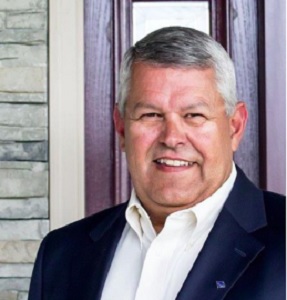
Charlie Pierce: Poorly managed bycatch is an Alaska tragedy
During my visits with communities throughout Alaska a number of concerns are discussed. One major concern, common to many communities is the effect of lax and dismissed enforcement of commercial fishing “Bycatch” rules by our current administration. Before going further, let me tell you the truth about that cute term “Bycatch.” Around the world it is called “discarded and killed fish.” “Bycatch” is a NOAA-created, feel-good phrase embraced by the Alaska Administration to make it sound like it’s no big deal. Politicians playing games with words. >click to read< 09:52

Why Are The Chum Runs So Low? It’s not just an Alaskan/Yukon phenomenon.
The State of Alaska has closed fishing for chum to protect the runs. For Yukon River families, chum is particularly important. Chinook salmon have been low for decades, but chum were the fish families could depend on until last year, when the summer chum run dropped below half of its usual numbers. This year the run dropped even further, to record lows. Biologist Katie Howard with the Alaska Department of Fish and Game said that the chum declines are not just occurring in the Yukon River. “When we talk to colleagues in the lower 48 and Canada, Japan, Russia, they are all reporting really poor chum runs. So it’s not just a Yukon phenomenon. It’s not just an Alaska phenomenon, but pretty much everywhere,” So why are the chum numbers so low? The short answer is no one really knows for sure. >click to read< 10:38
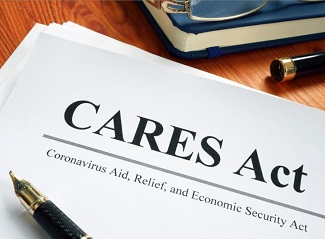
State of Alaska releases plan for $50m in fishing sector COVID-19 relief
The state has released its plan to divvy up $50 million in federal pandemic payments to Alaska’s fishing industry workers hard hit by COVID-19. Federal guidance suggested that the state should set aside more than half of the CARES Act funding for processors, about a third for commercial fishermen and 5 percent for sportfishing guides and lodges. But in a draft released on Oct. 5, the Department of Fish and Game proposes an even split between charter guides, the commercial fleet and seafood processors at 32%. >click to read< 13:22

Coronavirus: Fishing community takes precautions as it readies for salmon season
“We know the fish are coming regardless of COVID-19 or not and we can’t ask them to stay home.” Alaska Chief Medical Officer Dr. Anne Zink made the comment during a March 30 press briefing, adding that the state has a specific fisheries work group trying to figure out ways small communities can handle an influx of fishermen and processing workers while also adhering to important health guidelines that run counter to the realities of a traditional fishing season. While Alaska’s diverse fisheries continue year-round, the famed Copper River sockeye and king fishery that unofficially kicks off the salmon harvest in mid-May each year will be one of the first testing grounds for trying to find that balance. >click to read< 16:51

Coronavirus: Dear UFA Members and Friends, people arriving in Alaska are required to self-quarantine
As we all try to understand the magnitude of Covid-19, UFA is closely monitoring the evolving situation. We are actively engaged on the issue at the state and federal level and we will continue to provide you with information as soon as we get it. Last night, Governor Dunleavy issued a Health Mandate for the State of Alaska. All people arriving in Alaska, whether resident, worker or visitor, are required to self-quarantine for 14 days and monitor for illness. Arriving residents and workers in self-quarantine, should work from home, unless you support critical infrastructure (see Attachment A). (Food and agriculture, company cafeterias, cultivation, including farming, livestock, and fishing;) >click to read, links< 17:45
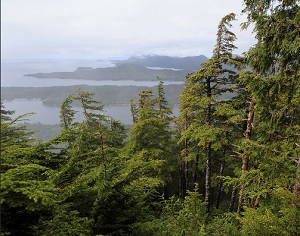
Commentary: Northwest must speak for trees, salmon in Alaska
Keeping the Roadless Rule in force for the Tongass protects resources and climate we enjoy at home.,, We rise before dawn, our 43-foot salmon troller, the Nerka, nestled among rocks in one of our favorite Southeast Alaskan bays. Pulling the anchor and puttering out to the fishing grounds, eyelids are still half-mast, minds precariously balanced between dreams and blurred reality from weeks of 18-hour days, hauling salmon aboard one fish at a time. >click to read< Search Results for: Tele Aadsen >click here< 12:10
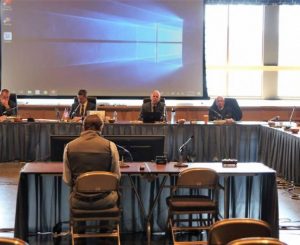
North Pacific fish council enters Pebble debate, over state’s objections
The state of Alaska believes the North Pacific Fishery Management Council is overstepping its bounds, by weighing in on the Pebble Mine Project in Bristol Bay. A proposed comment letter drafted by the Council prompted a strong reaction from the state, during the Council’s June meeting in Sitka. During its Sitka meeting Wednesday morning (6-5-19), the Council reviewed a letter it planned to send to the Army Corps of Engineers commenting on the draft environmental impact statement — or DEIS — of the Pebble Mine. >Audio clip, click to read<08:54
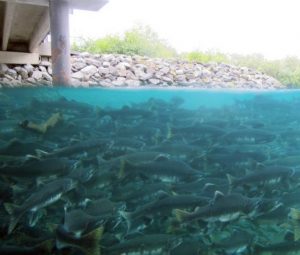
State of Alaska plans distribution of 2016 pink salmon season disaster relief funds
The state is working on distributing roughly $56 million in relief funds to those affected by the 2016 Gulf of Alaska pink salmon season disaster.,,, Julie Speegle, a spokesperson for the National Oceanic and Atmospheric Administration confirms that a spending plan is in the works, and representatives from the state, NOAA, and the Pacific States Marine Fisheries Commission met recently to discuss who will receive relief funds and how much. “The spending plan can cover a range of activities in support of commercial fisheries and support industries such as processors, fish houses, or communities affected by the disaster,” >click to read<12:43
Looming state gov’t shutdown threatens AK’s $500M salmon industry
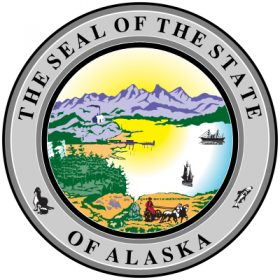 Alaska’s half-billion-dollar salmon season is in jeopardy if lawmakers don’t pass a state budget by the end of June. Without one, state government shuts down July 1. That’s also a big deadline for the fishermen statewide — that’s when they’ve got to be out on the water if they want to catch quality salmon. They need the Department of Fish and Game to do it. For Zack Worrell, fish and crab are his bread and butter. Worrell is looking forward to what could be a profitable season with well-priced salmon, but, if lawmakers don’t get a budget passed, his livelihood could swim away. Indeed, July 1 is the worst time to shut down the Alaska Department of Fish and Game. That’s when hundreds of millions of dollars worth of salmon swim back to Alaska shores. Video, click here to read the story 14:21
Alaska’s half-billion-dollar salmon season is in jeopardy if lawmakers don’t pass a state budget by the end of June. Without one, state government shuts down July 1. That’s also a big deadline for the fishermen statewide — that’s when they’ve got to be out on the water if they want to catch quality salmon. They need the Department of Fish and Game to do it. For Zack Worrell, fish and crab are his bread and butter. Worrell is looking forward to what could be a profitable season with well-priced salmon, but, if lawmakers don’t get a budget passed, his livelihood could swim away. Indeed, July 1 is the worst time to shut down the Alaska Department of Fish and Game. That’s when hundreds of millions of dollars worth of salmon swim back to Alaska shores. Video, click here to read the story 14:21
State to appeal setnet initiative ruling
The State of Alaska will appeal a state Superior Court decision that would permit a ballot initiative that could ban setnets in certain parts of the state. The Alaska Fisheries Conservation Alliance, or AFCA, filed a ballot initiative petition last November seeking to ask voters whether to ban setnets in urban parts of the state, which would primarily impact Upper Cook Inlet setnetters. <Read more here> 19:27
NMFS studies humpback delisting
 The National Marine Fisheries Service has responded favorably to the State of Alaska’s request to delist humpback whales, and will now proceed with a status review. According to a release from the agency, scientists estimate that there are 5,833 whales in that population segment, or DPS. Read more here 08:56
The National Marine Fisheries Service has responded favorably to the State of Alaska’s request to delist humpback whales, and will now proceed with a status review. According to a release from the agency, scientists estimate that there are 5,833 whales in that population segment, or DPS. Read more here 08:56
Full closure of Yukon River chinook salmon fishery is being recommended by the Yukon Salmon Sub-committee.
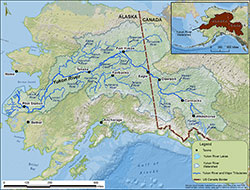 “At the end of this process, we will put to the minister (federal Fisheries minister) a solid recommendation from the communities, from the First Nations and the committee,” she said. The State of Alaska has already announced it will be implementing a complete closure on the chinook run, including a full closure of the subsistence fishery for the first time in Alaska’s history. Read more here 20:41
“At the end of this process, we will put to the minister (federal Fisheries minister) a solid recommendation from the communities, from the First Nations and the committee,” she said. The State of Alaska has already announced it will be implementing a complete closure on the chinook run, including a full closure of the subsistence fishery for the first time in Alaska’s history. Read more here 20:41
Oral argument scheduled in salmon lawsuit
 The Cook Inlet Fishermen’s Fund and United Cook Inlet Drift Association allege that the federal government erred when it removed Cook Inlet salmon management from the federal salmon fishery management plan, or FMP, and allowed the State of Alaska to take over without more federal oversight. Read more here 15:39
The Cook Inlet Fishermen’s Fund and United Cook Inlet Drift Association allege that the federal government erred when it removed Cook Inlet salmon management from the federal salmon fishery management plan, or FMP, and allowed the State of Alaska to take over without more federal oversight. Read more here 15:39
Disaster funds on hold until state, AVCP agree on split

 Alaska is set to receive $20.8 million for the 2012 salmon fisheries disasters, but how the money will be used is still being decided. First the State of Alaska and the Association of Village Council Presidents, or AVCP, must work on how to split the funds between Cook Inlet and Yukon-Kuskokwim stakeholders, said Art Nelson, policy and outreach director for the Bering Sea Fishermen’s Association. Read more here 16:20
Alaska is set to receive $20.8 million for the 2012 salmon fisheries disasters, but how the money will be used is still being decided. First the State of Alaska and the Association of Village Council Presidents, or AVCP, must work on how to split the funds between Cook Inlet and Yukon-Kuskokwim stakeholders, said Art Nelson, policy and outreach director for the Bering Sea Fishermen’s Association. Read more here 16:20
State of Alaska Backs Feds in Lawsuit over Fisheries Management – Video
 A group of fish processors, permit holders and crew members are suing the federal government over a measure giving the Department of Commerce broad authority to manage and conserve coastal fisheries. The 312-member United Cook Inlet Drift Association says the state’s salmon management plan is inadequate. The group is suing to make the federal government the lead regulator in state waters. Read [email protected] 08:53
A group of fish processors, permit holders and crew members are suing the federal government over a measure giving the Department of Commerce broad authority to manage and conserve coastal fisheries. The 312-member United Cook Inlet Drift Association says the state’s salmon management plan is inadequate. The group is suing to make the federal government the lead regulator in state waters. Read [email protected] 08:53
Coast Guard, State of Alaska monitors defueling of fishing tender F/V Fate Hunter near Shoup Bay, Alaska
![]()
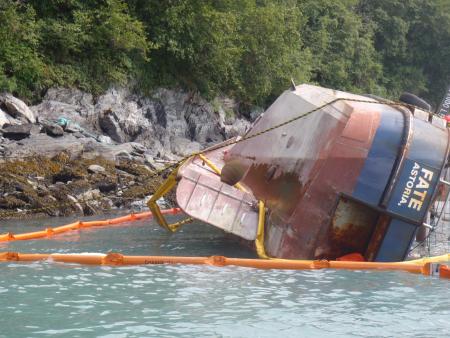 VALDEZ, Alaska — Coast Guard and Alaska Department of Environmental Conservation personnel continue to monitor response efforts to remove the pollution threat and cargo of fish from the 65-foot fishing tender Fate Hunter, grounded near Shoup Bay, four miles west of Valdez, Friday. more@uscgnews
VALDEZ, Alaska — Coast Guard and Alaska Department of Environmental Conservation personnel continue to monitor response efforts to remove the pollution threat and cargo of fish from the 65-foot fishing tender Fate Hunter, grounded near Shoup Bay, four miles west of Valdez, Friday. more@uscgnews
DEAR JOHN 2.0: Will “concerns” re. hatchery salmon lead to ‘loss of political support’ in Alaska for the ‘wild’/‘enhancement’ strategy?
An open letter to John Sackton, Editor of Seafood.com By Bertrand Charron, Editor of SeafoodIntelligence.com, Dear John, I believe it is high time – since my first ‘Dear John’ editorial of February 2012 – for a ‘Dear John 2.0’, as two of your well-articulated video comments during the past week do warrant praises and rebuttals of sorts [email protected] Lots of links, lots of information here. A lot to think about.






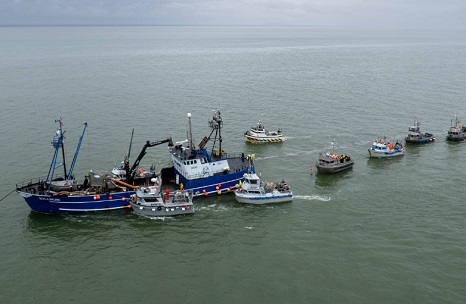
 Most of the benefit from the commercial fishing industry goes to local government, while the state overspends itself, according to a new analysis. A study conducted by Bob Loeffler and Steve Colt of the University of Alaska Anchorage’s Institute of Social and Economic Research found that the state spends about $27.2 million more on commercial fishing than it receives in revenue from the industry. This includes regulation, operations and capital projects.
Most of the benefit from the commercial fishing industry goes to local government, while the state overspends itself, according to a new analysis. A study conducted by Bob Loeffler and Steve Colt of the University of Alaska Anchorage’s Institute of Social and Economic Research found that the state spends about $27.2 million more on commercial fishing than it receives in revenue from the industry. This includes regulation, operations and capital projects. 




























